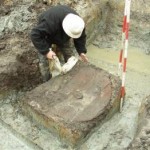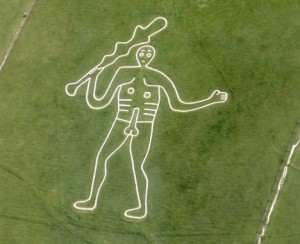Earlier this year, I posted repeatedly about the federal raids on looted and overvalued-for-tax-fraud Asian antiquities in prominent California museums.
 One of the sad results of this investigation was the arrest and death in custody of Asian antiquities specialist Roxanna Brown. She was known as a vocal opponent of the trade in looted artifacts, so it was shocking that she would be involved in this ugliness in the first place. Her sudden death was even more so.
One of the sad results of this investigation was the arrest and death in custody of Asian antiquities specialist Roxanna Brown. She was known as a vocal opponent of the trade in looted artifacts, so it was shocking that she would be involved in this ugliness in the first place. Her sudden death was even more so.
Now the LA Times has a 3-part story on the life and death of Roxanna Brown, her fascinating history ranging from being a freelance reporter in Vietnam during the war, to her opium addiction, to her marriage to a Buddhist monk, to the brutal car accident resulting in the loss of her leg, to becoming the preeminent expert on Asian ceramics, to actually helping the feds in the early stages of the investigation, to her devastating final descent into tax fraud and antiquities smuggling, and horrible, awful death.
Here’s a bit about how the collectors, the Markells, used Roxanna Brown’s reputation to submit phony appraisals for donated antiquities so they could write greater sums off on their taxes.
In another e-mail exchange from March 2007, Markell asked Brown to sign six to eight blank appraisal forms for future donations and offered the scholar $300 “for using you, as it were, as the appraiser. . . .”
“If you are nervous about doing this, please realize that the Republicans are still in office, the IRS does not have enough personnel to review small-time appraisals and the appraisals are very well written and will never be challenged,” Markell wrote, according to a copy of the e-mail filed with the affidavit.
The documents indicate that Brown responded via e-mail the same day: “No problem! I am delighted to be your partner in this.”
That’s not all she did. Smuggler Robert Olson, the key fence of stolen goods in the museum investigation, had a whole file named “Roxanna” and this is the kind of stuff the feds found in it.
In one undated document, Brown offered to sell Olson ancient bronze bracelets, Neolithic stone tools and Thai ceramics from “burial sites on the Burmese border,” according to copies of the correspondence attached to the July affidavit.
In an e-mail dated April 2002 that bears her name, she confirmed that she had received $14,000 in cash from Olson for a prehistoric bronze. Two months later, another e-mail from Brown advised Olson’s grandson of a Thai bank account to which additional money could be sent.
So she was smuggling looted antiquities herself. It’s hard to wrap my mind around this.
When I first posted about her death, the articles suggested “an apparent heart attack.” The truth is Roxanna Brown died of a perforated ulcer, vomiting her own excrement in a jail cell.
Read the whole story here:
Part 1
Part 2
Part 3
 Archaeologists excavating some Viking castles west of Copenhagen have uncovered a rare wooden Viking shield dating from over a thousand years ago.
Archaeologists excavating some Viking castles west of Copenhagen have uncovered a rare wooden Viking shield dating from over a thousand years ago.

